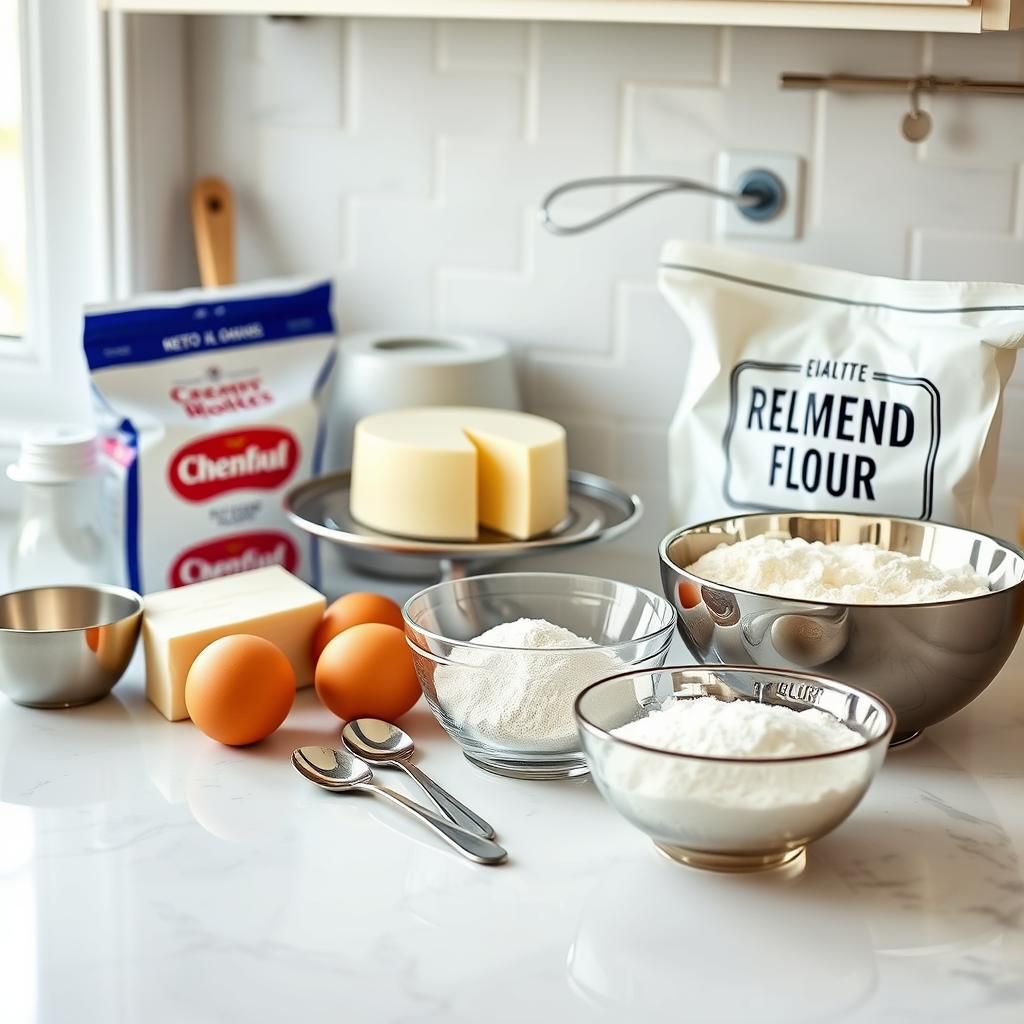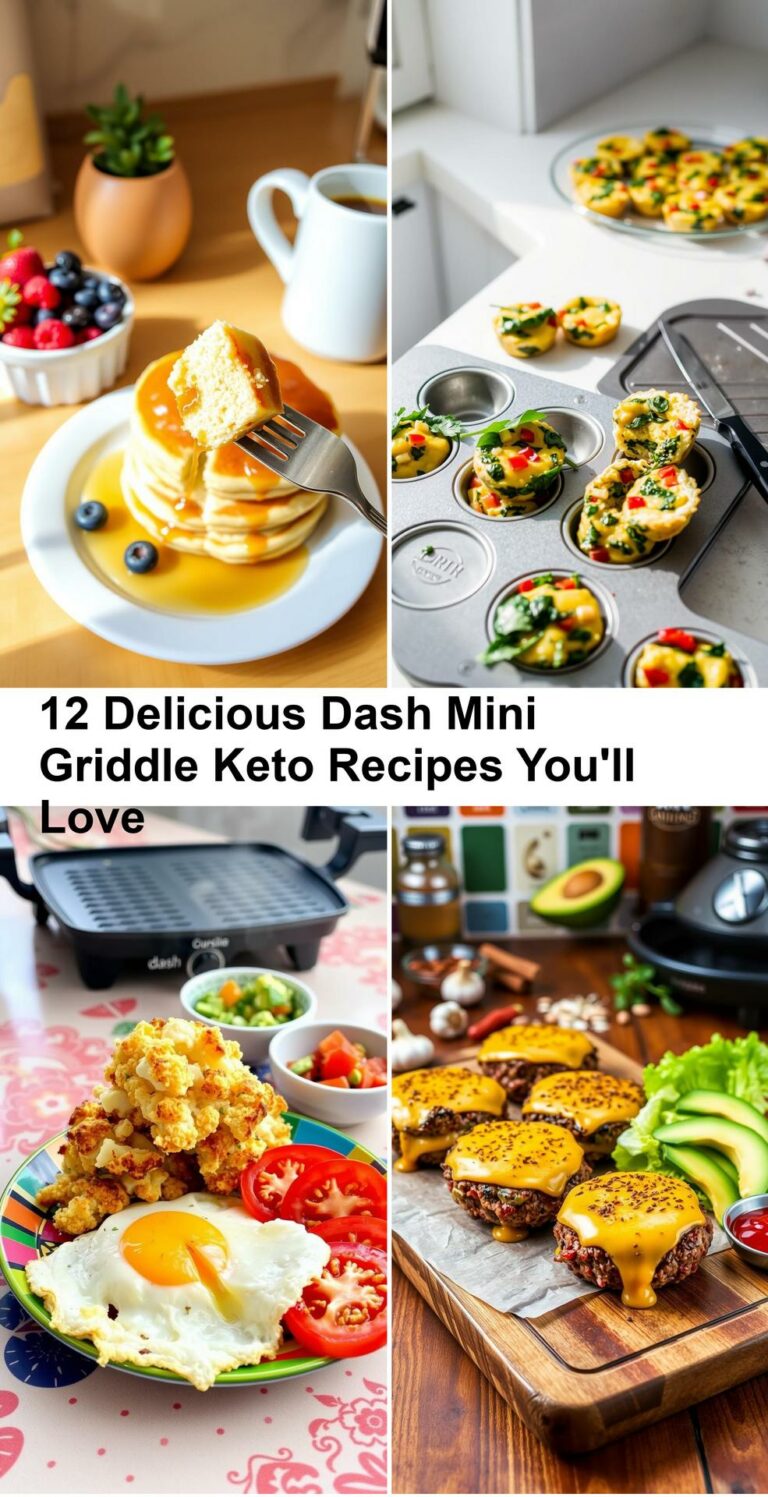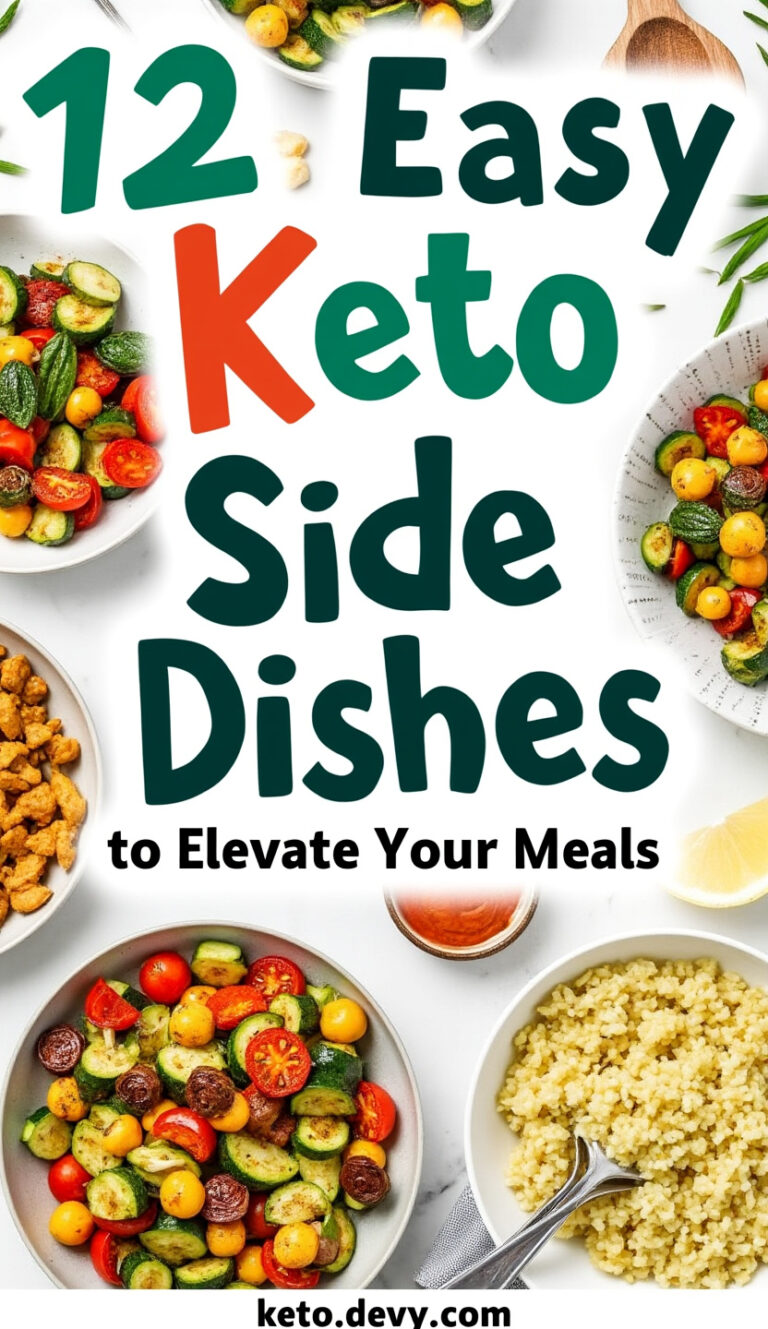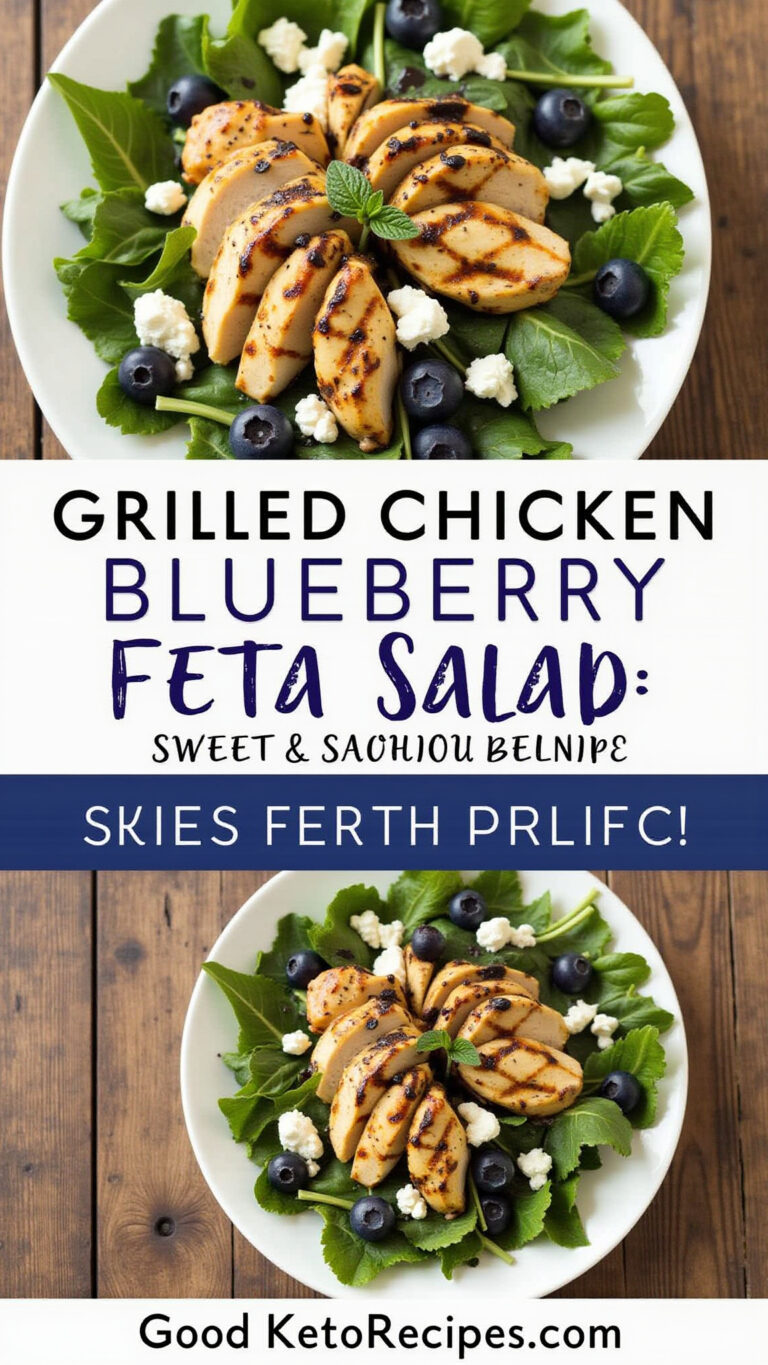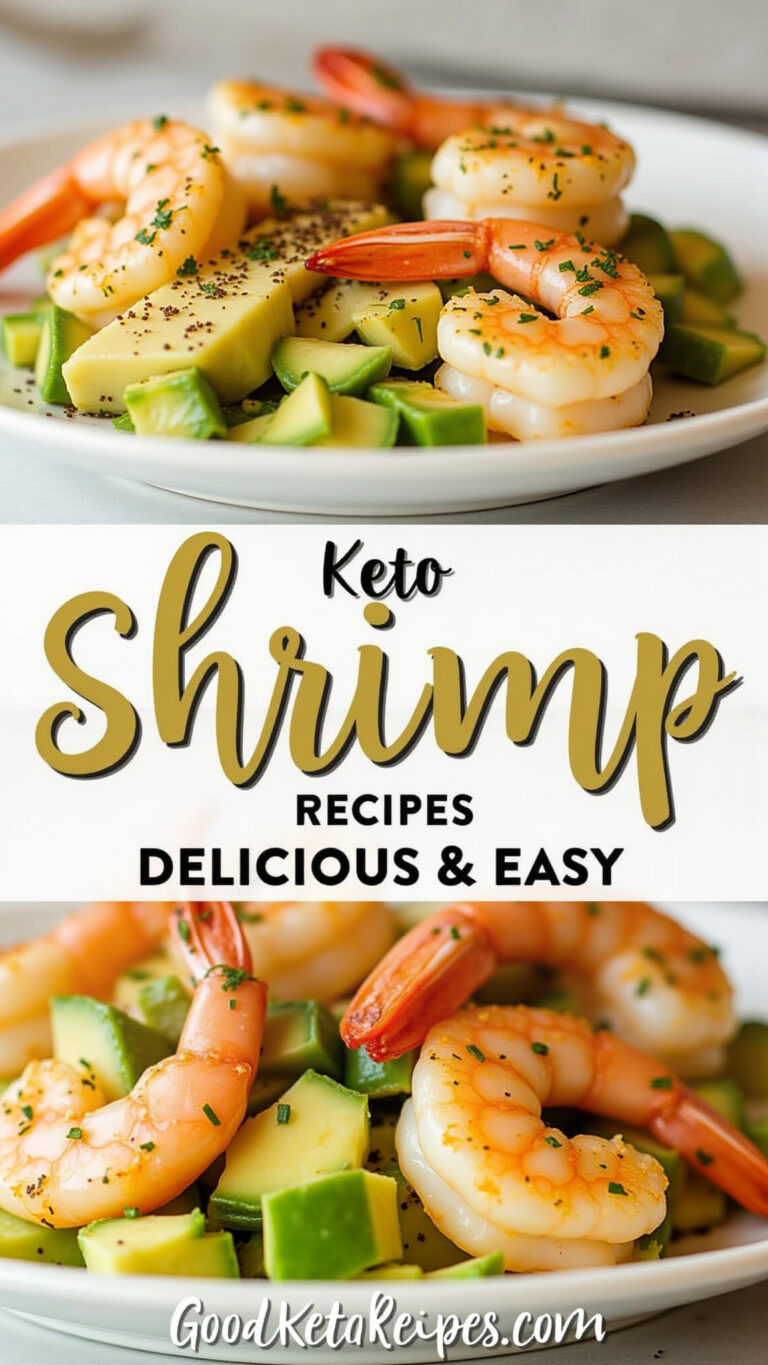Keto Cream Cheese Pancakes
Missing fluffy pancakes on your ketogenic diet? You’re not alone. Traditional pancakes, made with wheat flour and sugar, are high in carbohydrates and quickly spike blood sugar, making them incompatible with a keto lifestyle focused on low carbs and high fat. However, the craving for a warm stack drizzled with syrup doesn’t disappear just because you’ve switched your eating habits.
This is where the magic of keto comes in, offering innovative ways to recreate comfort food classics using keto-friendly ingredients. One such revelation for many following a low-carb path is the Keto Cream Cheese Pancake. Simple, relatively quick to make, and surprisingly satisfying, these pancakes utilize the unique properties of cream cheese to create a texture and richness that mimics their high-carb counterparts far better than many alternative recipes.
Unlike some keto pancake recipes that rely heavily on nut flours or protein powders, the cream cheese variant often uses just a few core ingredients: cream cheese, eggs, and perhaps a touch of sweetener and binding agent. This simplicity makes them accessible even for beginner keto cooks and keeps the ingredient list (and often the carb count) minimal.
But what makes them work? How do you achieve that delicate balance between structure and fluffiness without traditional flour? What are the secrets to preventing them from sticking or falling apart? And how do they truly fit into your daily keto macros?
Whether you’re just starting out or looking for comprehensive guidance, exploring resources like the Custom Keto Diet or The Ultimate Keto Meal Plan can provide tailored strategies for your low-carb journey. This guide will dive deep into the world of Keto Cream Cheese Pancakes, sharing expert tips, variations, serving suggestions, and nutritional information.
Let’s get started on mastering the art of Keto Cream Cheese Pancakes.
What Makes Cream Cheese Pancakes Keto-Friendly?
The ketogenic diet is fundamentally about shifting your body’s primary energy source from carbohydrates to fats. This metabolic state, called ketosis, is typically achieved by drastically reducing carbohydrate intake (usually to 20-50 grams per day), consuming a moderate amount of protein, and significantly increasing fat intake.
Traditional pancakes are made with refined flour and sugar, providing a large dose of rapidly digestible carbohydrates. A single medium pancake made with all-purpose flour can contain upwards of 20-30 grams of net carbs before toppings like syrup, easily pushing someone out of ketosis with just one or two servings.
Keto Cream Cheese Pancakes, on the other hand, are built upon ingredients that are naturally low in carbohydrates and high in fat or protein.
- Cream Cheese: This dairy product is a star in keto baking and cooking due to its high-fat content and very low carbohydrate count. A standard serving contains minimal carbs, primarily fat, and a small amount of protein. It provides structure, richness, and a creamy texture to the pancakes.
- Eggs: Eggs are a keto powerhouse. They are rich in protein and healthy fats and contain virtually no carbohydrates. In pancake recipes, eggs act as a primary binder, helping to hold the ingredients together, and contribute to the texture and rise.
- Sweetener (Keto-Friendly): If a touch of sweetness is desired, keto recipes use non-caloric or low-glycemic sweeteners like erythritol, stevia, monk fruit, or allulose. These sweeteners do not significantly impact blood sugar levels and have minimal to no net carbs, unlike table sugar, honey, or maple syrup.
- Binding Agents (Optional but Common): Some versions of cream cheese pancakes incorporate a small amount of low-carb flour, such as almond flour or coconut flour, or even a binder like psyllium husk powder or xanthan gum. While cream cheese and eggs provide much of the structure, these can help improve consistency, make the batter easier to work with, and reduce the fragility of the cooked pancakes. Even with these additions, the total carb count remains drastically lower than traditional pancakes.
By focusing on these ingredients, Keto Cream Cheese Pancakes successfully deliver the flavor and experience of pancakes while keeping the carbohydrate count low enough to maintain ketosis. A typical serving of 2-3 medium keto cream cheese pancakes often contains between 2-5 grams of net carbs, depending on the specific recipe and additions, making them a viable and enjoyable breakfast option on a keto diet.
The Basic Keto Cream Cheese Pancake Recipe
This recipe provides a simple yet effective base for delicious Keto Cream Cheese Pancakes. It focuses on minimal ingredients for ease and lower potential carb count, while still yielding a satisfying result.
Yields: Approximately 4-6 medium pancakes
Prep time: 5 minutes
Cook time: 10-15 minutes
Ingredients
- 4 ounces (about 1/2 cup) full-fat cream cheese, softened at room temperature
- 4 large eggs
- 2 tablespoons keto-friendly sweetener (erythritol, stevia blend, monk fruit blend, or allulose), adjusted to taste (optional)
- 1 teaspoon vanilla extract (optional, but recommended for flavor)
- Pinch of salt
- 1-2 tablespoons coconut oil, butter, or ghee for cooking
Optional Binder (for slightly more structure):
- 1 tablespoon almond flour OR 1 teaspoon coconut flour OR 1/2 teaspoon psyllium husk powder
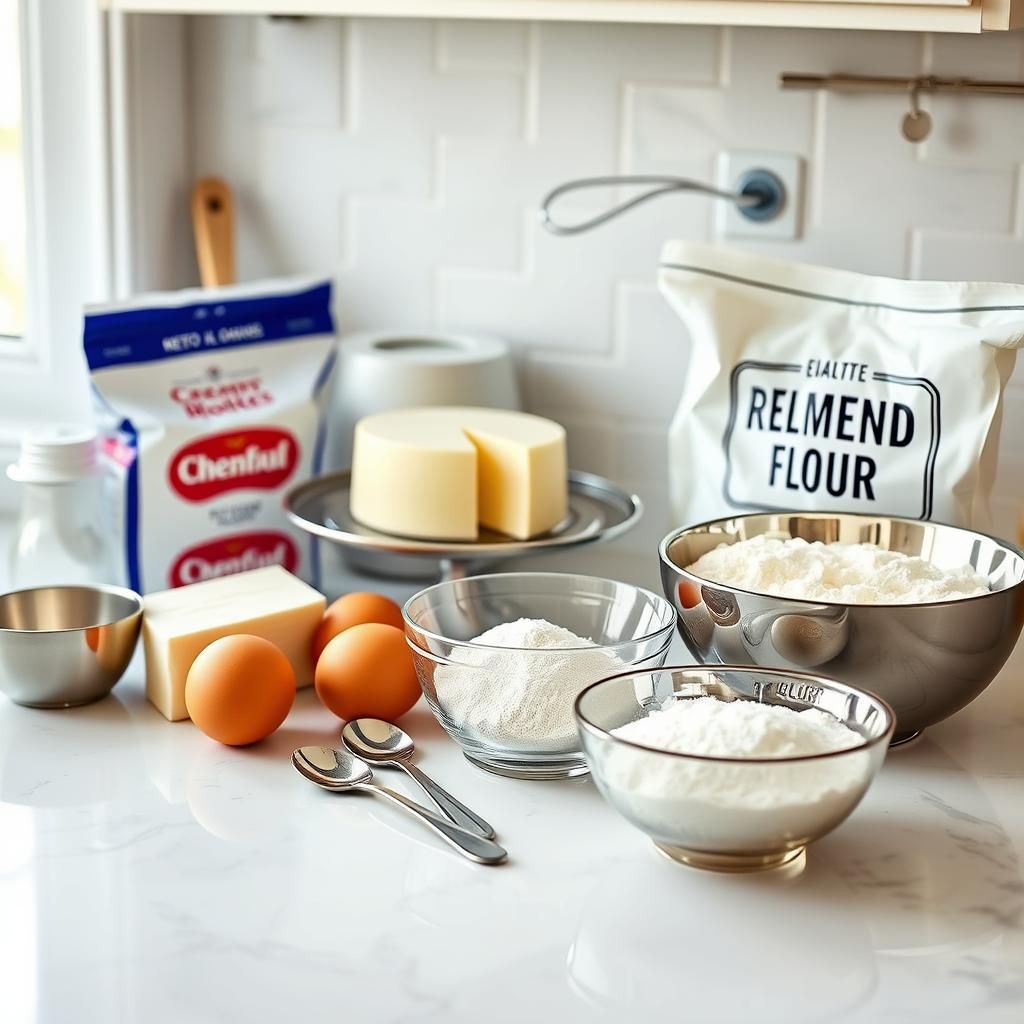
Equipment Needed
- Mixing bowl
- Whisk or electric mixer (hand mixer recommended for smoother batter)
- Spatula
- Measuring cups and spoons
- Griddle or non-stick frying pan
- Flipping spatula
Step-by-Step Instructions
Achieving perfect results with these pancakes requires attention to a few key details. Take your time, especially with the batter consistency and cooking heat.
- Soften the Cream Cheese: Ensure your cream cheese is truly softened. If it’s cold, it will be difficult to whisk smoothly and will leave lumps in the batter. You can leave it on the counter for 30-60 minutes or gently microwave it for 10-15 seconds (be careful not to melt it completely, just soften it).
- Combine Cream Cheese and Wet Ingredients: In your mixing bowl, add the softened cream cheese. Add the eggs, sweetener (if using), vanilla extract (if using), and salt.
- Mix Until Smooth: This is a crucial step for a lump-free batter. Use an electric hand mixer on low-medium speed, or vigorously whisk by hand. Mix until the cream cheese is fully incorporated and there are no visible lumps. The mixture should be smooth and liquidy. If you are using a binder like almond flour or coconut flour, whisk it in after the cream cheese and eggs are smooth. Psyllium husk or xanthan gum should also be whisked in at this stage. Let the batter sit for 1-2 minutes if using psyllium husk or xanthan gum to allow it to thicken slightly.
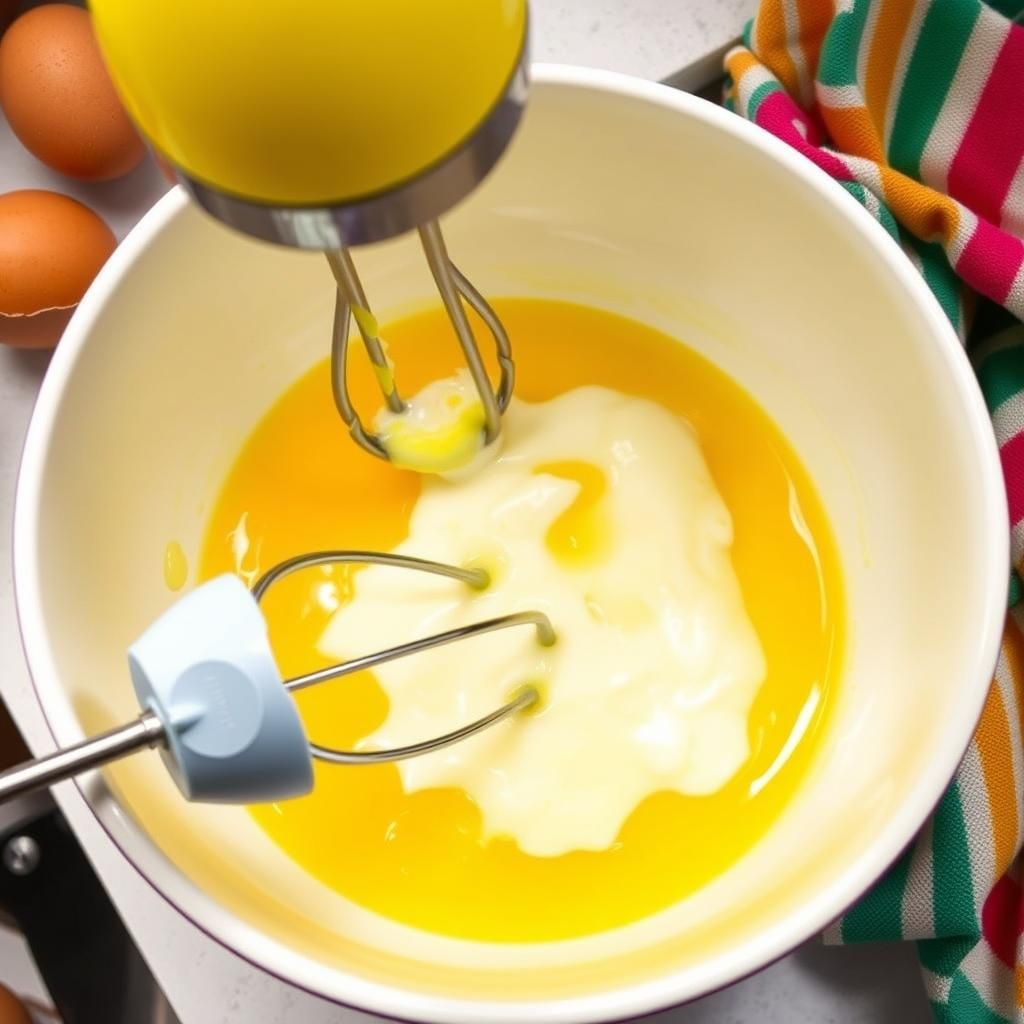
- Heat the Pan: Place your griddle or non-stick frying pan over medium-low heat. Keto pancakes, especially cream cheese ones, are more delicate than traditional ones and require a lower cooking temperature to cook through without burning. Give the pan ample time to heat evenly.
- Add Cooking Fat: Add about half a tablespoon to a tablespoon of coconut oil, butter, or ghee to the hot pan. Swirl or spread it to coat the cooking surface. Use enough fat to prevent sticking, but not so much that the pancakes fry rather than pan-fry.
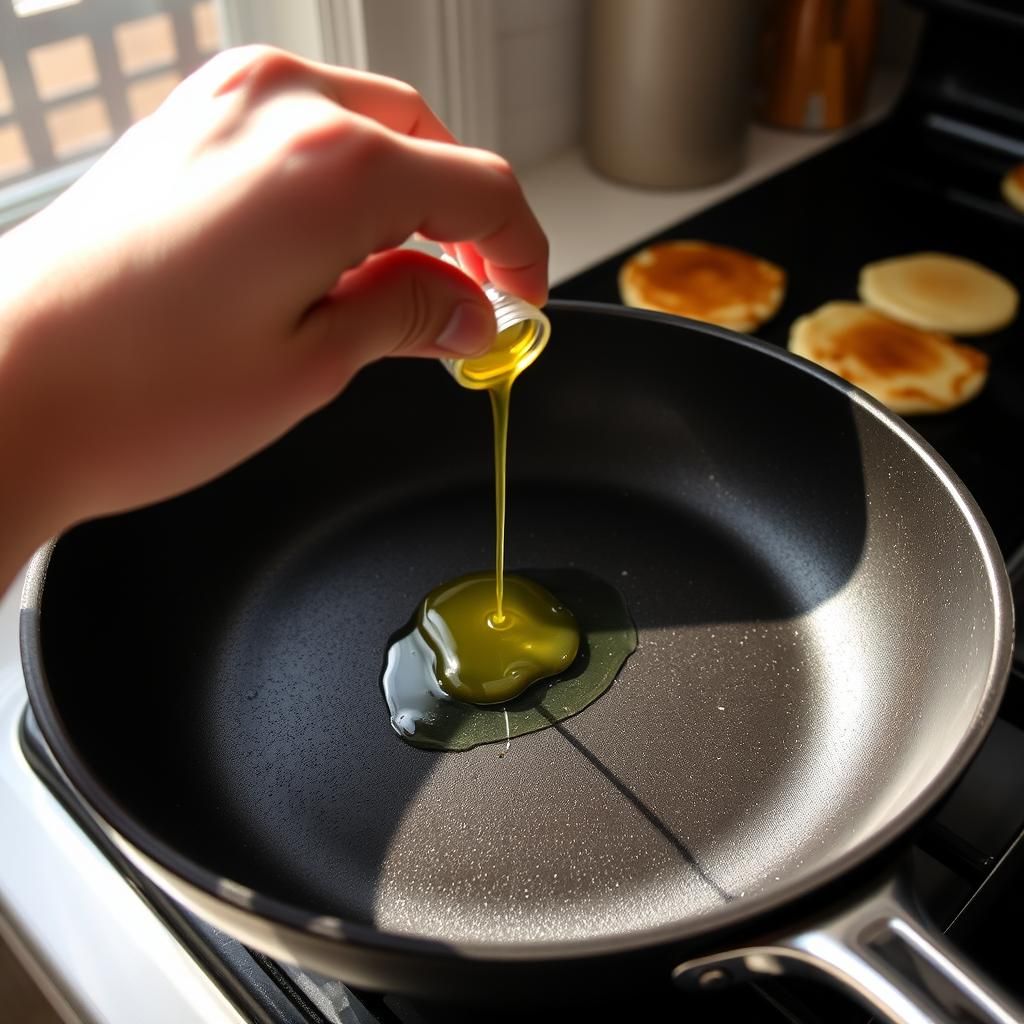
- Portion the Batter: Using a measuring cup (1/4 cup is a good size for medium pancakes) or a ladle, pour batter onto the hot pan. Leave space between the pancakes as they will spread slightly.
- Cook Slowly: Cook for 3-5 minutes on the first side. You’ll know they’re ready to flip when the edges look set and small bubbles may appear on the surface. The surface won’t look as “set” as wheat flour pancakes, so primarily watch the edges and the ability to gently slide your spatula under them.
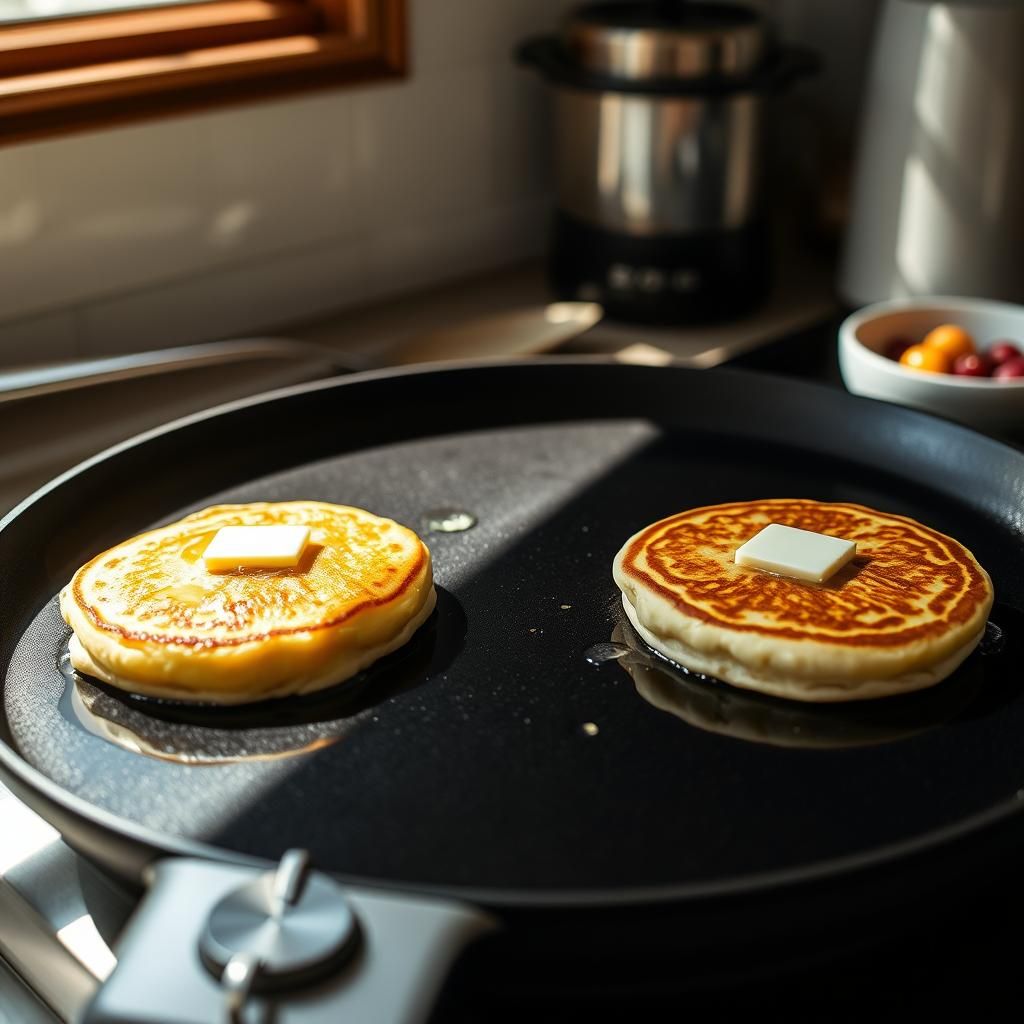
- Flip Carefully: These pancakes are delicate! Slide a thin, wide spatula completely underneath a pancake before gently and confidently flipping it over. If it resists or feels like it will break, cook for another 30 seconds to a minute before trying again.
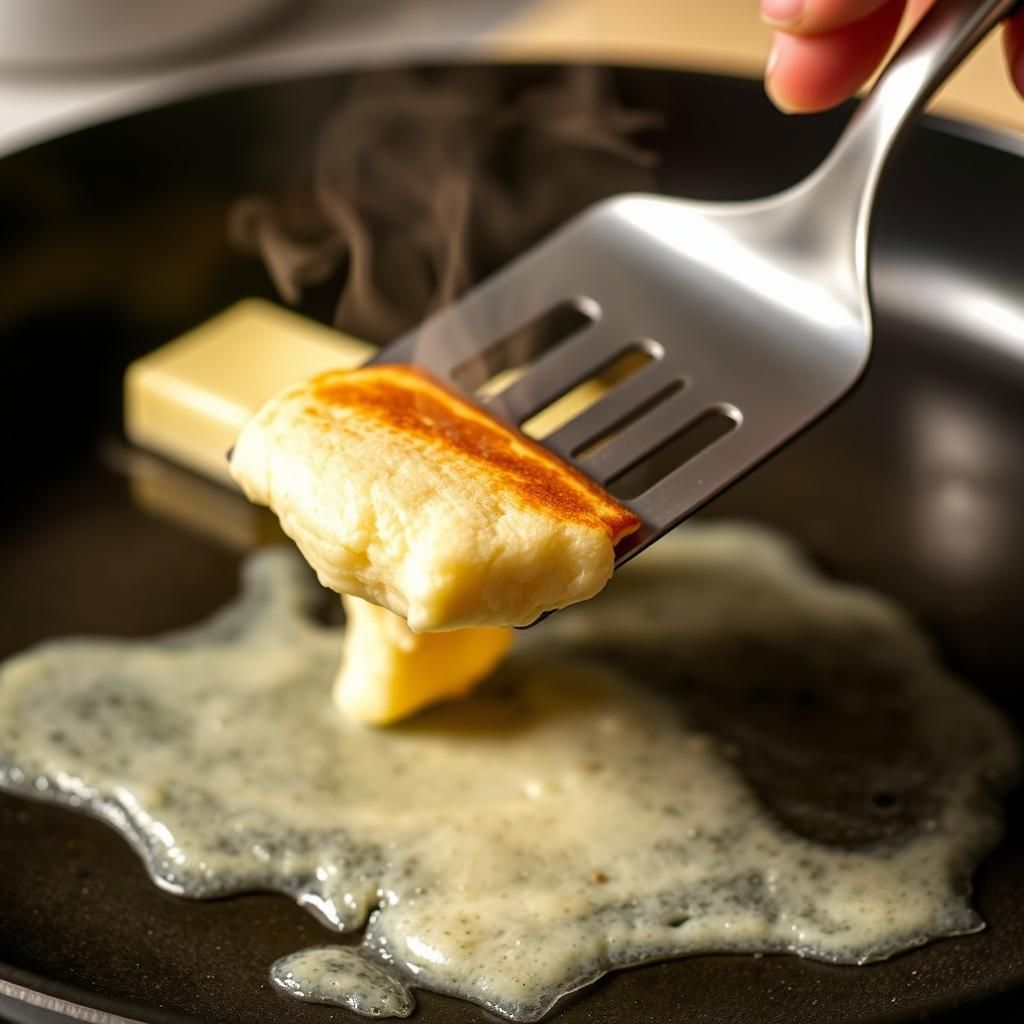
- Cook Second Side: Cook for another 2-4 minutes on the second side, or until golden brown and cooked through. The total cooking time per batch will depend on the thickness of your pancakes and the exact heat of your pan.
- Serve Immediately: Keto Cream Cheese Pancakes are best served hot off the pan. Stack them up and top with your favorite keto-friendly additions.
- Repeat: Add more cooking fat to the pan as needed between batches and continue cooking the remaining batter.
Following these steps will help you create tender, delicious Keto Cream Cheese Pancakes that are a far cry from the rubbery or eggy results some low-carb pancake attempts yield. If you’re looking for more low-carb baking ideas, check out resources like Keto Breads and Pizza recipe book or the 500 Delicious Keto Recipes Cookbook.
Why This Recipe Works: The Science Behind It
Understanding why these simple ingredients come together to create a pancake-like texture is key to mastering the recipe and troubleshooting common issues. It highlights the E-E-A-T principle by demonstrating knowledge beyond just listing steps.
- Cream Cheese as Structure and Fat: Unlike dry flours that absorb liquid and create a gluten network (in wheat flour) or a dense structure (in nut/coconut flours), cream cheese is primarily fat and water. When heated, the fat melts, contributing moisture and richness. The proteins in the cream cheese, along with the fat and the low carbohydrate content, create a tender crumb that doesn’t rely on a rigid flour structure. The fat also helps in the cooking process, preventing sticking and promoting browning. Its slight tang also adds a pleasant depth of flavor.
- Eggs as Binder and Leavener: Eggs play a dual role. The proteins in the egg white coagulate when heated, forming a network that binds the other ingredients together. This is crucial as there’s no gluten. The egg yolks add richness and emulsify the batter, preventing separation. Furthermore, whipping the eggs (even gently by whisking) incorporates air. When the batter hits the hot pan, this trapped air expands, and the egg proteins set around it, contributing to a slight lift and fluffiness, much like steaming helps rice or a soufflé rise. The protein content also makes these pancakes more filling.
- Sweetener (Optional): Keto sweeteners like erythritol or allulose not only provide sweetness without carbs but can also contribute slightly to texture, especially allulose which behaves more like sugar. They help with browning on the pan, giving the pancakes a nice golden color.
- Vanilla Extract & Salt: These are flavor enhancers. Vanilla adds a classic sweetness aroma, and salt balances the sweetness and highlights the other flavors.
- Optional Binders (Almond/Coconut Flour, Psyllium, Xanthan Gum): While the basic recipe works, adding a small amount of a low-carb binder can make the pancakes more forgiving.
- Almond Flour: Adds some structure and a nutty flavor. It absorbs some moisture, leading to a slightly thicker batter and a less fragile pancake.
- Coconut Flour: Highly absorbent. A little goes a long way. It adds more structure than almond flour but can result in a drier texture if too much is used. Adds a distinct coconut flavor.
- Psyllium Husk Powder: A soluble fiber that absorbs liquid and creates a gel-like consistency, acting as a strong binder. It can give pancakes a slightly chewier texture and a purplish tint, but provides excellent structure without adding many net carbs.
- Xanthan Gum: A powerful thickening and binding agent. Only a tiny amount is needed (often 1/4 to 1/2 teaspoon per recipe). It improves elasticity and prevents crumbling.
In essence, the combination of high-fat, low-carb cream cheese with the binding and structure-building properties of eggs, supported by optional low-carb binders, allows these pancakes to hold together and cook similarly to traditional ones, but without the carb load. The cooking technique, particularly the low heat, is also critical to allow the egg and cream cheese proteins to set gradually without burning the exterior.
Tips for Perfect Keto Cream Cheese Pancakes Every Time
Based on experience and common issues encountered when making these, here are tips to help you achieve consistently great results:
Achieving the Right Batter Consistency
- Soften the Cream Cheese: This cannot be stressed enough. Cold cream cheese will result in lumpy batter, uneven cooking, and poor texture. Ensure it’s very soft.
- Whisk Thoroughly: Use an electric hand mixer if you have one. It’s the easiest way to get a perfectly smooth, lump-free batter. If whisking by hand, be patient and persistent. Get into the corners of the bowl.
- Batter Should Be Pourable: The basic batter will be quite liquidy, similar to a thin crepe batter. This is normal. If you add a binder, it will thicken slightly, but should still be easily pourable. If it’s too thick (which is rare with this minimal ingredient version), you can whisk in an extra tablespoon of heavy cream or unsweetened almond milk.
Cooking Temperature is Key
- Use Medium-Low Heat: High heat is the enemy of these pancakes. It will cause the outside to brown or burn before the inside is cooked through, leading to a raw center and a burnt exterior. Medium-low heat allows the egg and cream cheese to set gently and cook evenly.
- Preheat Properly: Give your pan or griddle at least 5-10 minutes to heat up evenly on medium-low. An evenly heated surface prevents hot spots that can lead to uneven cooking.
- Adjust as Needed: All stoves and pans are different. Watch your first pancake carefully. If it’s browning too quickly, lower the heat. If it’s taking forever and not setting, slightly increase the heat.
Flipping Techniques
- Wait for the Edges to Set: The edges of the pancake will look slightly opaque and firm when it’s ready to flip. Bubbles may appear on the surface, but they might not pop and create holes like traditional pancakes.
- Use the Right Spatula: A thin, wide spatula is your best friend. It needs to be thin enough to get completely under the delicate pancake without tearing it, and wide enough to support its full width during the flip.
- Be Confident and Swift: Once you’re sure it’s ready, slide the spatula fully under, lift slightly, and flip with a smooth, decisive motion. Hesitation can lead to the pancake folding or breaking.
Avoiding Sticking
- Use a Good Non-Stick Pan or Griddle: This is almost non-negotiable for easy flipping.
- Use Enough Fat: Don’t be shy with the cooking fat (butter, ghee, or coconut oil). These fats are keto-friendly and essential for creating a non-stick surface and adding flavor. Replenish the fat between batches as needed. A visual cue is that the pan surface should look slightly slick with melted fat.
- Ensure Pan is Hot Enough (but not too hot): If the pan isn’t hot enough, the batter will just sit there and potentially soak into the surface rather than starting to cook and release. Conversely, if it’s too hot, the fat can smoke or burn, and the pancake will stick and burn quickly.
Other Helpful Tips
- Don’t Overcrowd the Pan: Cook only as many pancakes as can comfortably fit with space between them. This makes them easier to flip and ensures even heat distribution.
- Serve Immediately: These pancakes have the best texture right off the pan. They can lose some of their appeal if left to sit for too long before serving.
- Double or Triple the Batch: If you’re making these for multiple people or want leftovers, easily scale up the recipe. Just ensure you have a large enough bowl and cooking surface.
By paying attention to these details – especially the cream cheese temperature, cooking heat, and flipping technique – you’ll dramatically increase your success rate and consistently produce delicious Keto Cream Cheese Pancakes.
Variations to the Basic Recipe
While the basic recipe is fantastic on its own, you can easily customize Keto Cream Cheese Pancakes to suit your flavor preferences or add different textures.
Using Different Flours
If you want a slightly thicker, more structured pancake, you can add a small amount of low-carb flour. Be mindful that this will slightly increase the carb count, but it can make the pancakes easier to handle.
- Almond Flour Variation: Add 1-2 tablespoons of superfine almond flour to the batter after mixing the wet ingredients. Whisk well to combine. This adds a nutty flavor and helps create a more traditional pancake texture. Start with 1 tablespoon and see if you like the consistency before adding more.
- Coconut Flour Variation: Add 1-2 teaspoons of coconut flour to the batter. Whisk extremely well. Coconut flour is very absorbent, so you need much less than almond flour. It will thicken the batter considerably. This adds a distinct coconut flavor and results in a slightly denser, more structured pancake. Be careful not to add too much, or the pancakes can become dry and crumbly.
Flavor Boosters
Easily change the flavor profile by adding extracts or spices.
- Classic Vanilla & Almond: Use both vanilla extract (1 tsp) and a few drops of almond extract for a bakery-style flavor.
- Cinnamon Swirl: Add 1/2 teaspoon of ground cinnamon to the batter. This pairs wonderfully with keto sweeteners and cream cheese.
- Lemon Zest: For a bright, refreshing flavor, add 1/2 to 1 teaspoon of finely grated lemon zest to the batter.
- Pumpkin Spice: During the fall, add 1/2 to 1 teaspoon of pumpkin pie spice.
- Cocoa Powder: Sift in 1-2 tablespoons of unsweetened cocoa powder for a chocolatey version. You may need to add a tiny splash of liquid (like almond milk) as cocoa powder is absorbent.
Explore more specialized keto recipes with resources like the Keto Snack Cookbook or the Keto Dessert Book.
Savory Options
Cream cheese isn’t just for sweet dishes! These pancakes can easily be transformed into savory sides or snacks. Omit the sweetener and vanilla extract.
- Cheesy Pancakes: Add 1/4 cup of shredded cheese like cheddar, mozzarella, or Parmesan to the batter. Cook as directed.
- Herb Pancakes: Stir in a tablespoon of finely chopped fresh herbs like chives, parsley, or dill.
- Garlic & Herb: Add a pinch of garlic powder and dried herbs like oregano or thyme.
These savory variations pair well with eggs, bacon, avocado, or smoked salmon. You might also find interesting savory ideas in the Keto Soup Detox or Keto Air Fryer Cookbook.
Adding Protein
If you want to boost the protein content, you can carefully add a small amount of unflavored or vanilla keto-friendly protein powder (like whey isolate or collagen peptides).
- Protein Boost: Whisk in 1-2 tablespoons of protein powder with the optional binders. Be aware that protein powders vary greatly in absorbency and can sometimes make baked goods dry or rubbery. Start with a small amount and see how it affects the texture. You might need to add a splash of liquid.
Experimenting with these variations allows you to keep your keto breakfast exciting while staying well within your macros.
Serving Suggestions & Keto-Friendly Toppings
The right toppings can elevate your Keto Cream Cheese Pancakes from a simple dish to a gourmet experience. The key is to choose options that are low in net carbs and high in healthy fats.
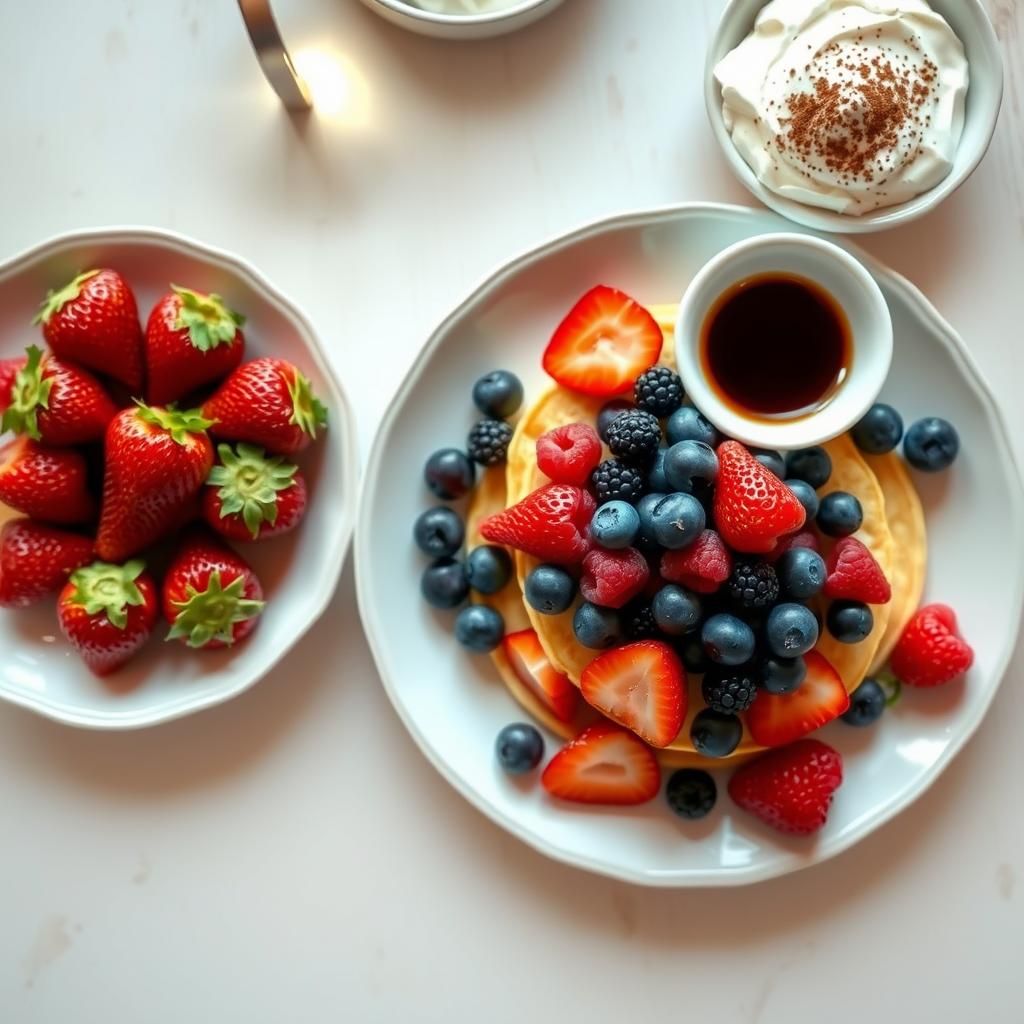
Sugar-Free Syrups
The most classic pancake topping gets a keto makeover.
- Store-Bought Keto Syrups: Many brands now offer sugar-free syrups sweetened with erythritol, monk fruit, or other keto-friendly sweeteners. Check the ingredient list and net carb count carefully, as quality and taste can vary.
- Homemade Sugar-Free Syrup: Easily make your own by simmering a keto sweetener (like erythritol or allulose) with water and a thickener like xanthan gum (use sparingly, like 1/4 tsp per cup of liquid) and flavorings (like maple extract, vanilla). Adding a tablespoon of butter or MCT oil can add richness.
Berries
Most berries are lower in net carbs than other fruits and can be enjoyed in moderation on a keto diet.
- Raspberries: One of the lowest-carb berries. A small handful (around 1/4 cup) provides flavor and antioxidants with minimal net carbs.
- Strawberries: Also relatively low in carbs. Slice a few for topping.
- Blueberries: Higher in carbs than raspberries or strawberries, so use very sparingly if you choose them.
Whipped Cream
Homemade whipped cream is incredibly keto-friendly.
- Heavy Whipping Cream: Whip cold heavy whipping cream until soft or stiff peaks form. Sweeten with a tiny amount of keto sweetener (like powdered erythritol or stevia drops) and a splash of vanilla extract.
Nuts & Seeds
Add crunch, healthy fats, and a little protein.
- Chopped Pecans or Walnuts: Sprinkle a few over your pancakes for texture.
- Chia Seeds or Hemp Seeds: A small sprinkle adds healthy fats and fiber.
Butter & Ghee
Simple yet classic and adds crucial keto fats.
- Grass-Fed Butter or Ghee: A pat of high-quality butter or ghee melting over hot pancakes is pure comfort and adds healthy fats.
Other Sweet Toppings
- Sugar-Free Chocolate Chips: A few sugar-free chocolate chips (check carb count) melted on top.
- Nut Butter or Seed Butter: A drizzle of natural almond butter or peanut butter (check for added sugar) adds protein and fat.
- Coconut Flakes: Unsweetened shredded coconut flakes for a tropical touch.
Savory Toppings (for savory variations)
If you made savory cream cheese pancakes, consider these:
- Fried Egg: A classic pancake pairing.
- Bacon or Sausage: Adds savory flavor and fat.
- Avocado: Sliced or mashed avocado for healthy fats.
- Smoked Salmon and Dill: Pairs wonderfully with cream cheese pancakes (especially if you added chives or dill to the batter).
- Sour Cream or Greek Yogurt (Full-Fat): A dollop adds tanginess.
Choose toppings that fit your daily carb allowance and fat goals. Remember that while the pancakes are low-carb, toppings can add carbs quickly if you’re not careful (especially berries).
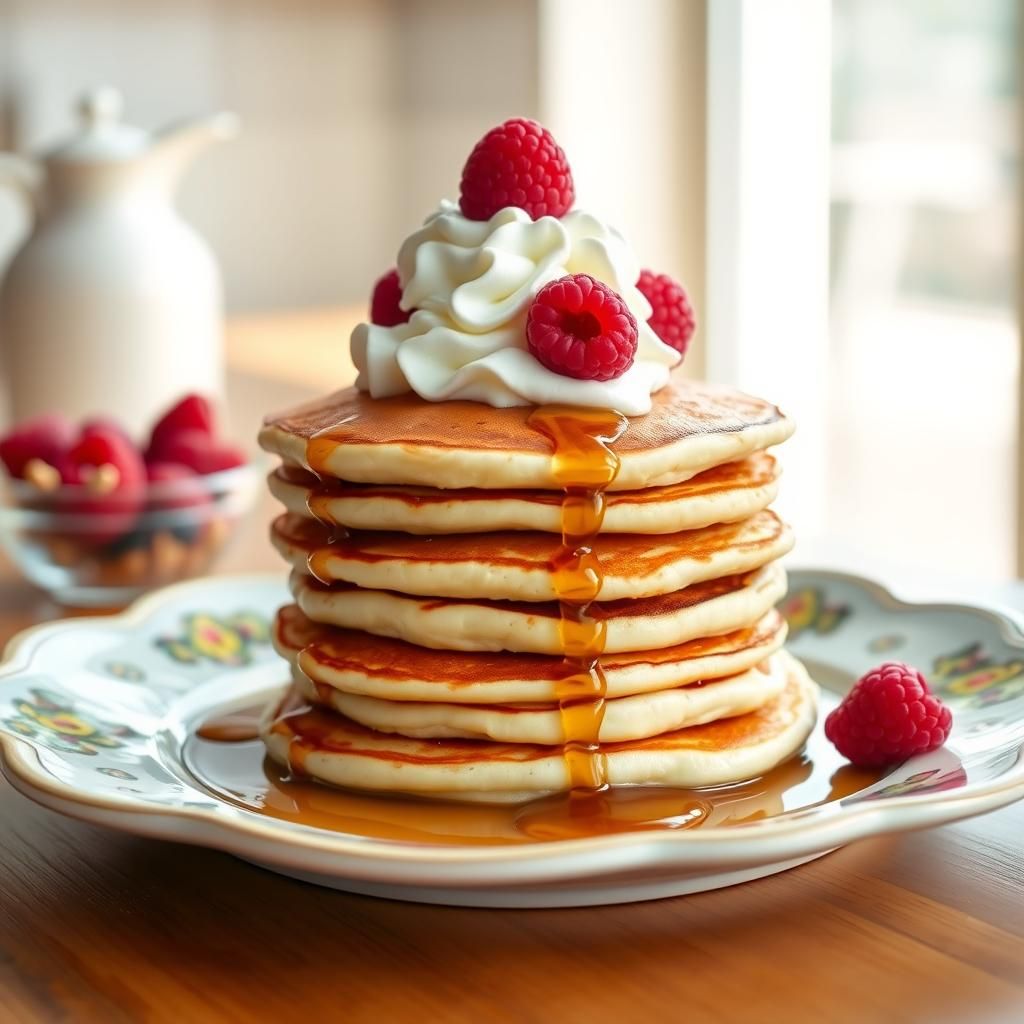
Macros & Nutritional Information
Understanding the macronutrient breakdown of your Keto Cream Cheese Pancakes is essential for tracking your daily intake and ensuring you stay in ketosis.
The exact macros will vary slightly depending on:
- Specific Recipe: Whether you use a binder (and which one), the amount of sweetener, and the amount of cooking fat absorbed.
- Serving Size: How many pancakes you eat.
- Ingredients Used: Brands of cream cheese, eggs, and optional flours can have minor variations.
Let’s calculate an estimate based on the basic recipe provided (without optional binder or sweetener, using butter for cooking), divided into 6 medium pancakes.
- Ingredients:
- 4 oz Full-Fat Cream Cheese: Approx. 40g Fat, 8g Protein, 4g Net Carbs
- 4 Large Eggs: Approx. 20g Fat, 24g Protein, 2g Net Carbs
- 1 Tbsp Butter for Cooking (assume half absorbed): Approx. 6g Fat, 0g Protein, 0g Net Carbs
- Totals for the Entire Batch (approximate):
- Fat: 40 + 20 + 6 = 66g
- Protein: 8 + 24 + 0 = 32g
- Net Carbs: 4 + 2 + 0 = 6g
- Macros Per Serving (if divided into 6 pancakes):
- Fat: 66g / 6 = 11g
- Protein: 32g / 6 = ~5.3g
- Net Carbs: 6g / 6 = 1g
- Macros Per Serving (if divided into 4 pancakes):
- Fat: 66g / 4 = 16.5g
- Protein: 32g / 4 = 8g
- Net Carbs: 6g / 4 = 1.5g
Note: This is a basic estimate. Adding sweetener, almond flour, coconut flour, psyllium, or using more cooking fat will change these numbers. For accurate personal macros, input the specific ingredients and quantities you use into a nutrition tracking app or website.
How They Fit into Your Daily Macros:
Keto macros typically aim for a ratio like 70-80% fat, 15-20% protein, and 5-10% carbohydrates of total daily calories.
- A serving of Keto Cream Cheese Pancakes (e.g., 4 pancakes) provides a significant amount of fat and protein with very few net carbs (around 1.5g).
- This makes them an excellent breakfast choice that helps you meet your fat and protein targets early in the day while keeping your carb count low.
- Be mindful of toppings! Adding a few tablespoons of sugar-free syrup (check the label, can be 0-2g net carbs per serving), a handful of raspberries (2-3g net carbs), and a dollop of whipped cream (minimal carbs) will add to the total. Factor in the carbs from all ingredients consumed.
By being aware of the macro breakdown, you can easily fit these delicious pancakes into your daily keto plan, whether your goal is weight loss, maintenance, or simply enjoying a low-carb lifestyle. For overall guidance on the keto journey, considering resources like The Keto Diet or the 30 DAY KETO MEAL PLAN can be very helpful.
Comparing Cream Cheese Pancakes to Other Keto Pancake Types
The keto community has developed various methods for making low-carb pancakes. How do the cream cheese versions stack up against others?
Vs. Almond Flour Pancakes
- Texture: Almond flour pancakes tend to be denser and have a slightly grainy texture. Cream cheese pancakes are generally more tender and custard-like in the center.
- Ease: Cream cheese pancakes, especially the basic version, often use fewer ingredients and are quicker to mix as you avoid dealing with clumpy flour.
- Carbs: Almond flour adds more net carbs per serving compared to the basic cream cheese and egg mix.
- Flavor: Almond flour adds a nutty flavor. Cream cheese adds a subtle tang and richness.
Vs. Coconut Flour Pancakes
- Texture: Coconut flour pancakes are very absorbent, often resulting in a drier, more structured pancake. They can sometimes feel a bit “spongy.” Cream cheese pancakes are moister and more delicate.
- Ease: Working with coconut flour requires precision due to its absorbency. The batter can be very thick. Cream cheese batter is more forgiving in terms of mixing consistency (though precise cooking heat is key).
- Carbs: Coconut flour adds minimal net carbs but more fiber. A little goes a long way.
- Flavor: Coconut flour has a distinct coconut flavor that some people don’t prefer in pancakes.
Vs. Protein Powder Pancakes
- Texture: Protein powder pancakes can be very dry, rubbery, or dense depending on the type of protein powder used and the recipe. Cream cheese pancakes typically have a softer, more tender texture.
- Ease: Can be simple to mix, but achieving the right texture can be hit-or-miss with different protein powders.
- Carbs/Protein: Protein pancakes are often higher in protein and lower in fat than cream cheese pancakes.
- Flavor: Can sometimes have a distinct protein powder aftertaste.
Overall: Keto Cream Cheese Pancakes offer a unique balance of simplicity, texture (tender and moist), and flavor that many keto dieters find superior to other flour-based or protein-based low-carb pancake recipes. They provide a good amount of fat, fitting well into keto macros, and their delicate nature, while requiring careful cooking, results in a less “fake” or dry texture than some alternatives. They are particularly appealing to those looking for a minimal-ingredient, lower-carb option within the keto pancake sphere.
Integrating Keto Cream Cheese Pancakes into Your Keto Lifestyle
These pancakes aren’t just a novelty; they can be a valuable and enjoyable part of a sustainable ketogenic diet.
- For Weight Loss: As long as they fit within your daily calorie and macro limits, these pancakes can be a satisfying meal that prevents cravings for high-carb alternatives. Their high fat and protein content can help with satiety, keeping you feeling full longer than a carb-heavy breakfast. Being mindful of portion sizes and high-calorie toppings is important for weight loss.
- For Maintenance: Once you’ve reached your weight goals, these pancakes are a fantastic way to maintain a low-carb lifestyle while still enjoying treat meals. They offer flexibility and pleasure without derailing ketosis. You might have more room for slightly more generous toppings or larger servings.
- Meal Prep Ideas: While best fresh, cooked cream cheese pancakes can be refrigerated or frozen. This makes them a good option for meal prepping quick keto breakfasts during the week. Simply reheat and add toppings for a fast, keto-compliant start to your day. Prepare the batter the night before for even faster morning cooking.
- Vary Your Breakfasts: Relying on just one breakfast option can lead to boredom. Incorporating Keto Cream Cheese Pancakes into a rotation with other keto staples like eggs and bacon, avocado toast on keto bread, or chia pudding keeps your diet interesting and ensures you’re getting a variety of nutrients.
Think of Keto Cream Cheese Pancakes as a tool in your keto arsenal – a delicious way to satisfy a craving, enjoy a leisurely breakfast, or provide a quick, high-fat meal when needed. Their versatility, especially with the variations discussed, means you can enjoy them regularly without monotony.
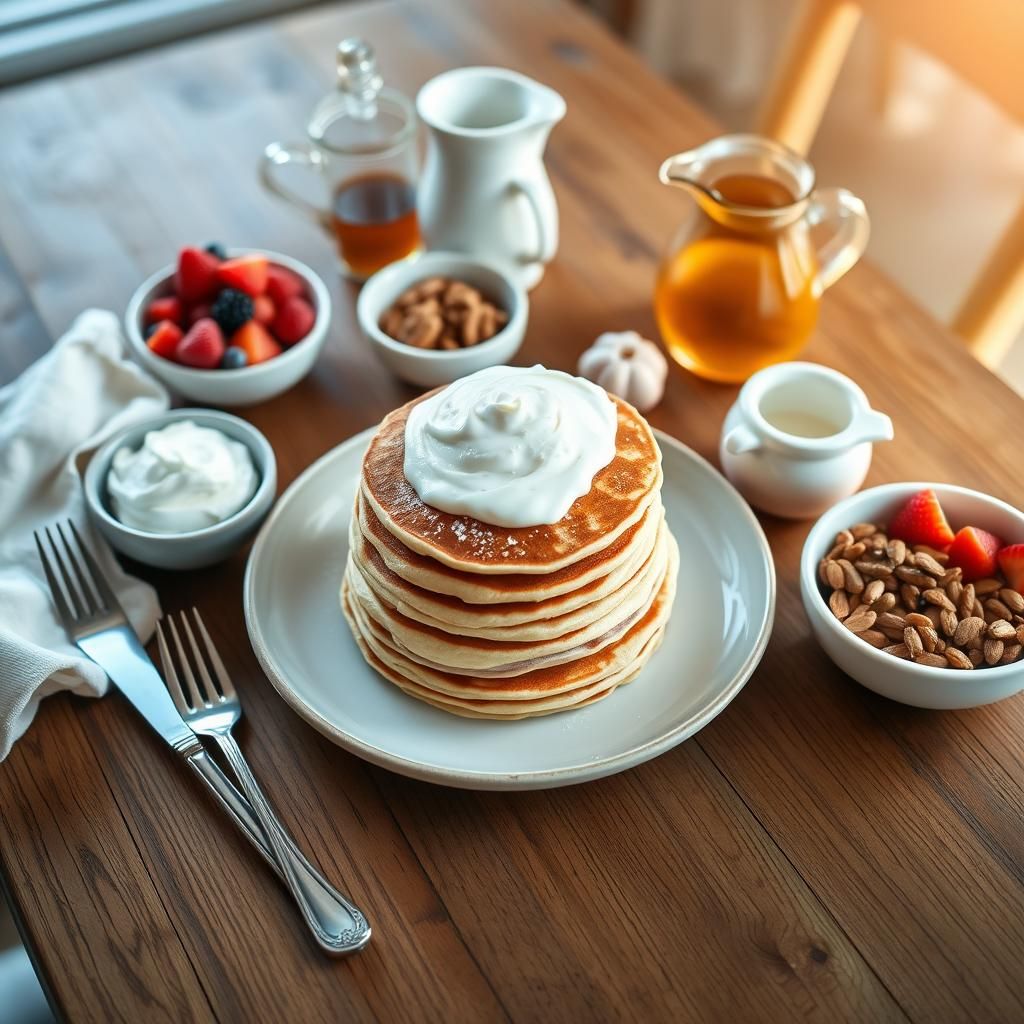

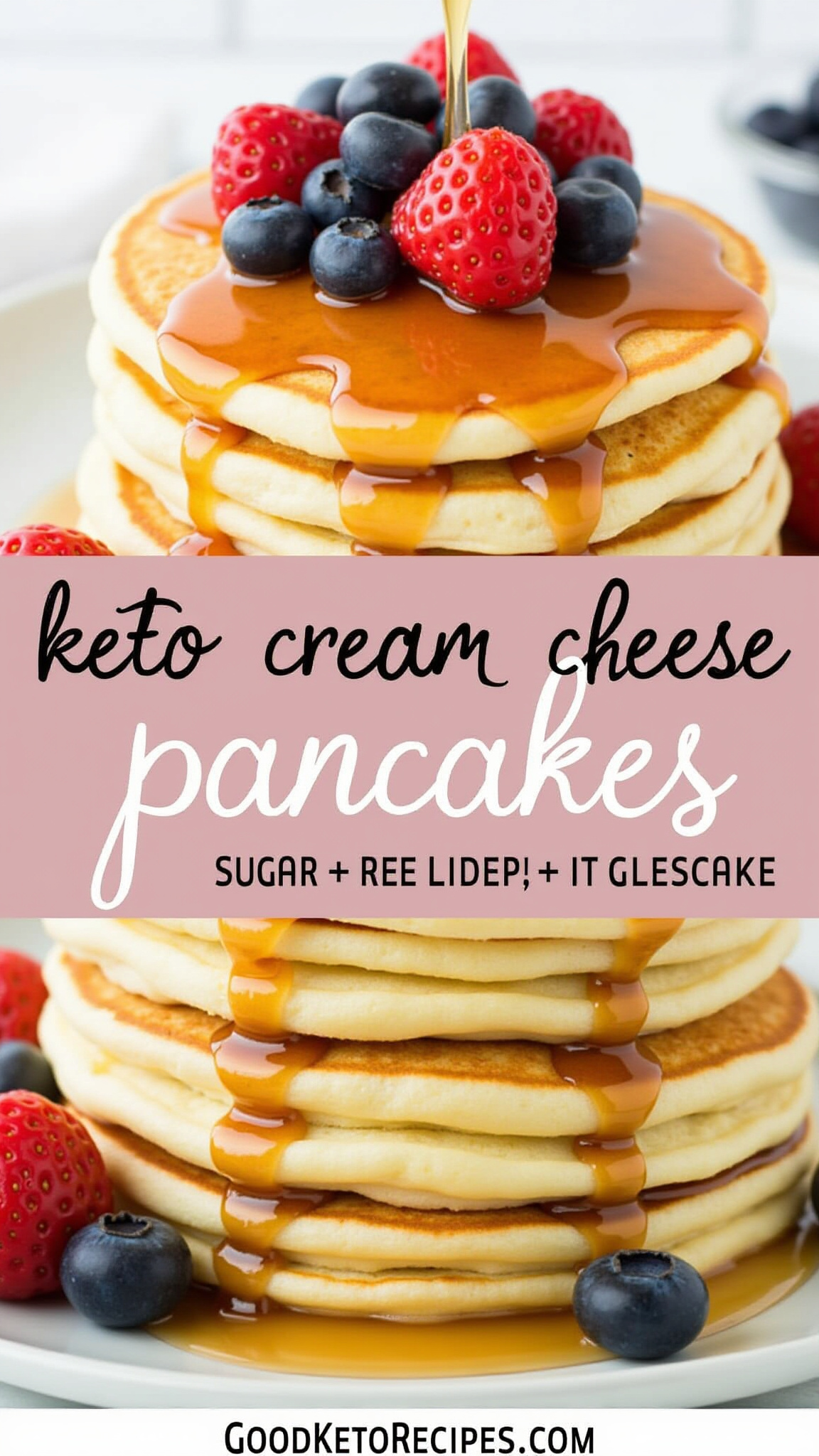
Affiliate Link Disclosure: Some of the links in this post are affiliate links. This means that if you click on the link and make a purchase, I may receive a small commission at no extra cost to you. I only recommend products or services that I personally use and believe will be valuable to my readers.
